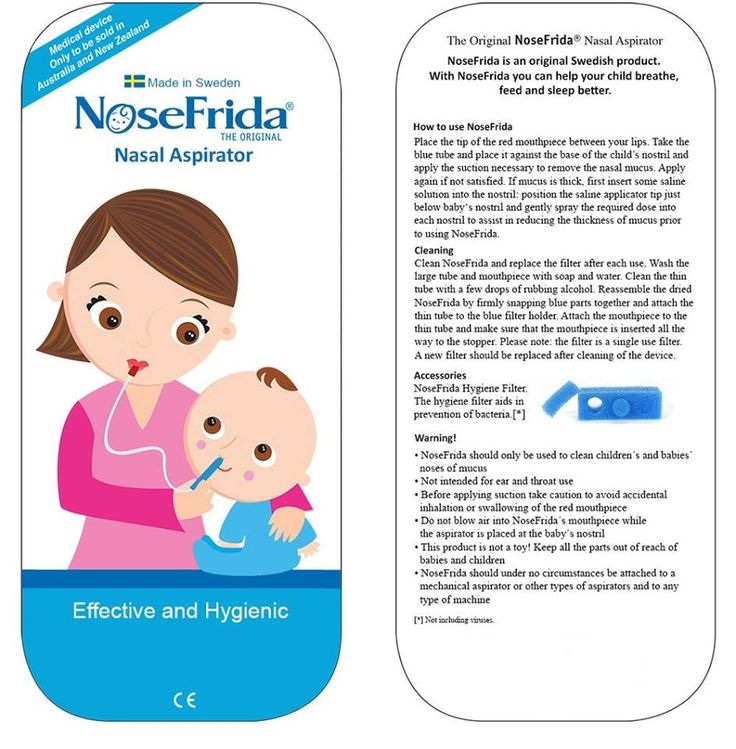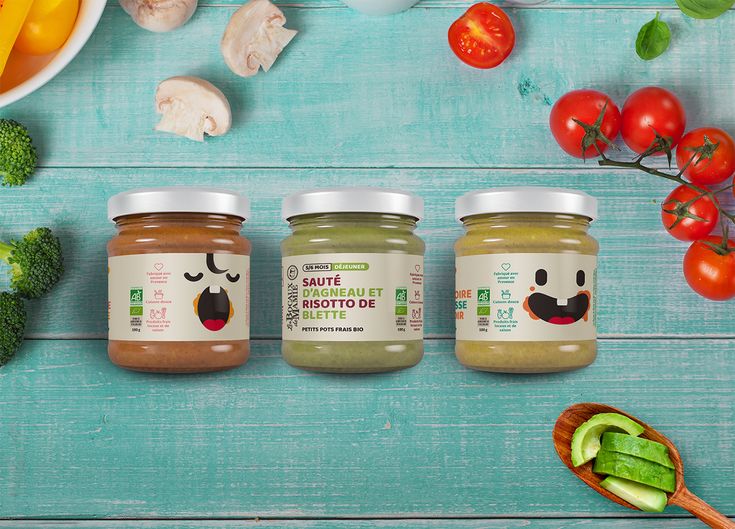Baby food introduction order chart
Baby formula feeding chart: How much formula by weight and age
Is your baby getting too much or too little formula? It's an important question that worries many new parents, especially those with newborns. When deciding how much formula to give your baby, it's important to watch their hunger cues as well as looking at guidelines based on age and weight. In general, before they're eating solids, babies need 2.5 ounces of formula per pound of body weight each day.
These guidelines are for babies who are exclusively formula-fed for the first 4 to 6 months, and then fed a combination of formula and solids up to age 1. If your baby is getting a combination of breast milk and formula, talk to their doctor for separate advice.
Your pediatrician can tell you where your baby falls on the growth charts, make sure they're growing steadily on their own growth curve, and help you ensure that they're getting a healthy amount of formula. If you're ever worried about your baby's growth, behavior, or development, talk with their doctor.
How much formula for a newborn
For the first few days, offer your newborn 1 to 2 ounces of formula every 2 or 3 hours. (At first, newborns may only take a half ounce of formula at a time.)
After the first few days, give your newborn 2 to 3 ounces of formula every 3 to 4 hours.
Initially it's best to feed your formula-fed newborn on demand, whenever they show signs that they're hungry. Because your little one can't tell you when they want a bottle, you'll need to learn to read their hunger cues. Crying is often a late sign of hunger, so if you can, try to catch the earlier signs that it's time for a feeding.
Here are some hunger cues to watch for:
- Smacking or licking their lips
- Rooting (moving their jaw, mouth, or head in search of food)
- Putting their hands to their mouth
- Opening their mouth
- Fussiness
- Sucking on things
- Becoming more alert
- Crying
As time passes, your newborn will begin to develop a fairly regular feeding schedule. You'll become familiar with their cues and needs, and knowing when and how much to feed them will be much easier.
You'll become familiar with their cues and needs, and knowing when and how much to feed them will be much easier.
Formula feeding chart by weight
During the first 4 to 6 months, when your baby isn't eating solid foods, here's a simple rule of thumb: Offer 2.5 ounces of formula per pound of body weight every 24 hours, with a maximum of about 32 ounces.
Advertisement | page continues below
| Weight | Ounces of formula |
|---|---|
| 6 pounds | 15 fl oz every 24 hours |
| 7 pounds | 17.5 fl oz every 24 hours |
| 8 pounds | 20 fl oz every 24 hours |
| 9 pounds | 22.5 fl oz every 24 hours |
| 10 pounds | 25 fl oz every 24 hours |
| 11 pounds | 27.5 fl oz every 24 hours |
| 12 pounds | 30 fl oz every 24 hours |
These numbers aren't rigid rules. They offer a rough estimate for what your baby may need.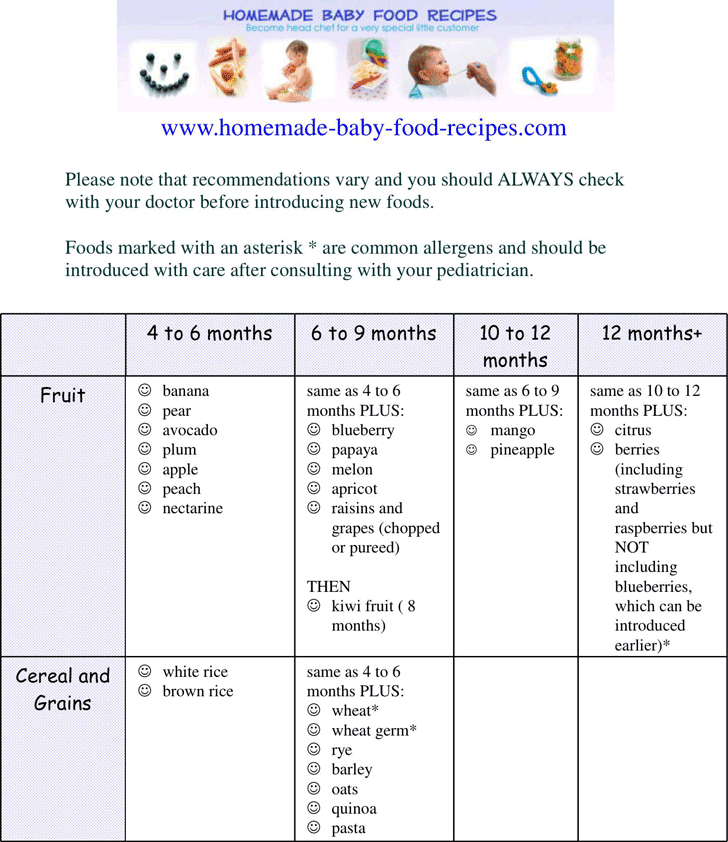 Some babies will grow well while taking less than the recommended amount, while others consistently need more. Your baby's daily feedings will also vary according to their individual needs – in other words, they may want a bit more on some days and a bit less on others.
Some babies will grow well while taking less than the recommended amount, while others consistently need more. Your baby's daily feedings will also vary according to their individual needs – in other words, they may want a bit more on some days and a bit less on others.
Formula feeding chart by age
Here are typical amounts per day based on age:
| Age | Ounces of formula |
|---|---|
| Full-term newborn | 2 ounces per bottle every 3 to 4 hours |
| 1 month old | 3 to 4 ounces per bottle every 3 to 4 hours |
| 2 month old | 4 to 5 ounces per bottle every 3 to 4 hours |
| 3 month old | 4 to 6 ounces per bottle every 3 to 4 hours |
| 4 month old | 4 to 6 ounces per bottle, 4 to 6 times a day |
| 5 month old | 4 to 6 ounces per bottle, 4 to 6 times a day |
| 6 month old | 6 to 8 ounces per bottle, 4 to 5 times a day |
| 7 month old | 6 to 8 ounces per bottle, 3 to 5 times a day |
From 8 months old until their first birthday, you can expect your baby to have 7 to 8 ounces per bottle, 3 to 4 times a day.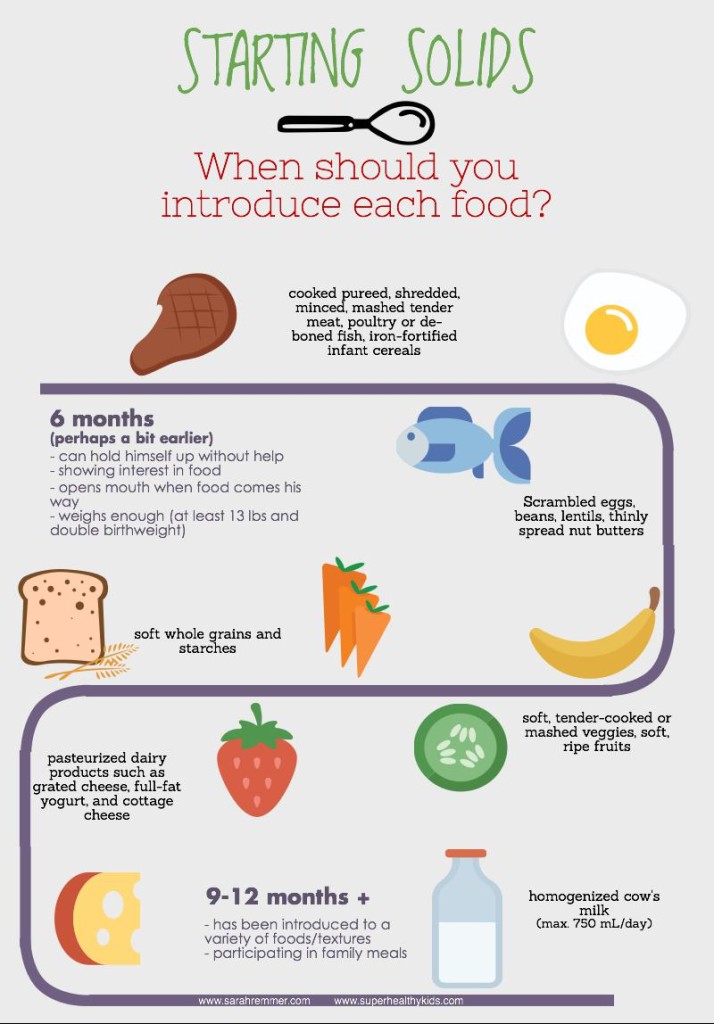
As your baby gets older – and their tummy gets bigger – they'll drink fewer bottles a day with more formula in each. It's important not to overfeed your baby so they'll stay at a healthy weight. Your baby shouldn't have more than 32 ounces of formula in 24 hours.
When they reach their first birthday, they can stop drinking formula and transition to cow's milk in a bottle, sippy cup, straw cup, or open cup. Limit your toddler to 16 to 24 ounces (2 to 2.5 cups) a day of whole milk, so they have room for other healthy foods.
Here are signs that your baby's getting all the formula they need:
- Steady weight gain. They continue to gain weight after their first 10 days and follow a healthy growth curve during their first year. (Most babies lose up to 7 to 10 percent of their birth weight in the first few days and then regain it by the time they're about 2 weeks old.)
- Happy baby. They seem relaxed and satisfied after a feeding.
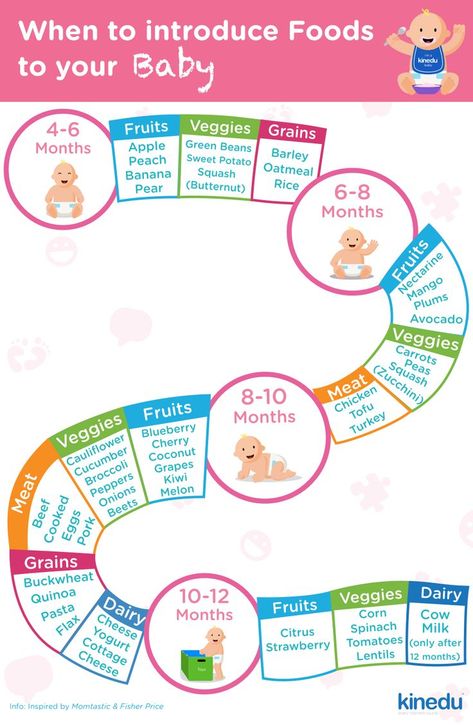
- Wet diapers. They wet two to three diapers a day in the first few days after birth. Over the next few days, the amount should increase to at least five to six wet diapers a day.
Babies are usually good at eating the amount they need, but bottle-fed babies can drink too much at times. Here are the signs that they're getting too much formula:
- Vomiting after a feeding may be a sign that your baby had too much. (Spitting up is normal, vomiting isn't.)
- Tummy pain after a feeding can also be a sign of overfeeding. If your baby draws up their legs or their tummy seems tense, they may be in pain. (See other possible reasons for stomach pain in babies.)
If your baby seems to want to eat all the time, even after finishing a bottle, talk to your pediatrician. Using a pacifier may help soothe their need to suck.
Formula-feeding tips
- In general, babies eat when they're hungry and stop when they're full, so resist the temptation to encourage your baby to finish each bottle.
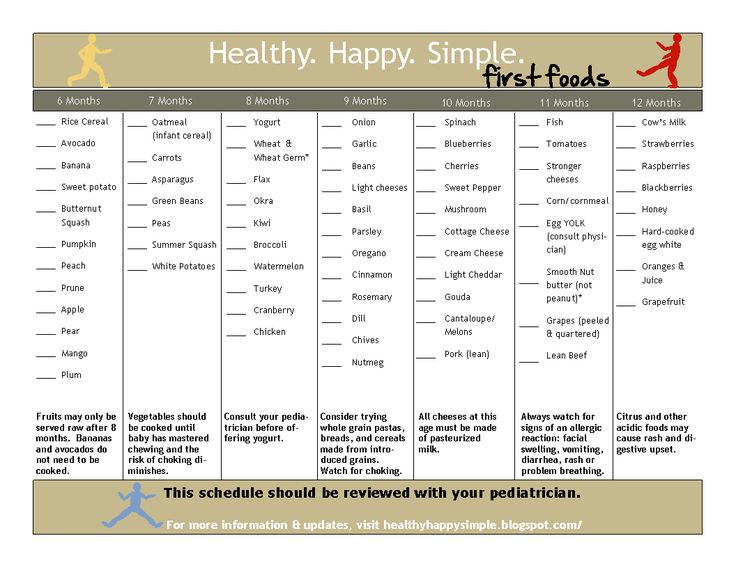 Overfeeding during infancy can contribute to obesity later in life.
Overfeeding during infancy can contribute to obesity later in life. - Don't respond to your baby's every cry with a bottle. They may be crying because their diaper is wet, they're cold or hot, they need to be burped, or they want to be close to you. (Learn more about why babies cry, and how to soothe them.)
- Your baby may be hungrier than usual during growth spurts. These typically occur 10 to 14 days after birth and around 3 weeks, 6 weeks, 3 months, and 6 months of age.
Read more:
- Formula Feeding Problem Solver
- How to safely store and use formula
Was this article helpful?
Yes
No
How much should my baby eat? A guide to baby food portions
- Community
- Getting Pregnant
- Pregnancy
- Baby names
- Baby
- Toddler
- Child
- Health
- Family
- Courses
- Registry Builder
- Baby Products
Advertisement
Wondering how much to feed your baby? This can be hard to figure out, especially when you're starting solids and most of your baby's food ends up on your little one or the floor. It's also difficult to determine how much an 8-month-old (or older baby) should eat – babies this age are more interested in solid foods but still get most of their nutrition from breast milk or formula. This visual guide to baby food portions can help you figure out how much your baby should eat at every stage.
It's also difficult to determine how much an 8-month-old (or older baby) should eat – babies this age are more interested in solid foods but still get most of their nutrition from breast milk or formula. This visual guide to baby food portions can help you figure out how much your baby should eat at every stage.
Photo credit: Karla Martin for BabyCenter
How much should my baby eat?
Do you worry that your baby is eating too little or too much? Your baby will self-regulate her food intake based on what their body needs, so let their appetite be your guide.
It's helpful to have a reference point, however. Here are photos of how much solid food a baby typically eats in a day. You can also ask your baby's doctor for feeding advice.
This visual guide shows:
- Portions for infants who are new to solids (typically 4 to 6 months)
- Two sample meals for a younger baby (6 to 8 months)
- Three sample meals and two snacks for an older baby (8 to 12 months) from a menu developed by the American Academy of Pediatrics (AAP)
Your little one may eat less or more than what's shown here. Your job is to provide a variety of healthy foods at regular intervals without pressure, and their job is to decide what and how much to eat.
Your job is to provide a variety of healthy foods at regular intervals without pressure, and their job is to decide what and how much to eat.
Photo credit: iStock.com / UntitledImages
Watch for signs your baby is full
Lots of factors – including activity level, growth spurts or plateaus, illness, and teething – will affect your baby's appetite, which can vary daily.
End feeding when they signal that they're done. Signs of being full include:
- Turning their head away
- Refusing to open their mouth for another bite after they've swallowed (resist the urge to encourage your baby to have one last spoonful)
- Leaning back in their chair
- Playing with the spoon or food rather than eating
Photo credit: Karla Martin for BabyCenter
How much a 4- to 6-month-old should eat
When your baby is developmentally ready for solids, typically around 4 to 6 months, talk to their doctor about introducing solid foods. The first bites are mostly about them getting used to the idea of having something different in their mouth.
The first bites are mostly about them getting used to the idea of having something different in their mouth.
- Start with a very small amount, 1 to 2 teaspoons, of a single-ingredient puree.
- Gradually increase to 1 to 2 tablespoons of food once a day.
- Follow your baby's fullness cues.
Popular first foods include pureed mango, banana, chicken, turkey, beef, peas, sweet potatoes, and infant cereal. It's up to you what food to start with, but wait 3 to 5 days between introducing each new food to make sure your baby doesn't have an allergic reaction or food intolerance. (And remember, no cow's milk or honey until age 1.)
Photo credit: Karla Martin for BabyCenter
How much a 6- to 8-month-old should eat
As your little one gets more comfortable with solids, you can increase the frequency of meals and variety of food.
- Transition from one to two meals a day, typically by 8 months.
- Over time, add a second food to each meal.
 The photo above is an example of a meal with two foods.
The photo above is an example of a meal with two foods. - Once you've worked up to two meals with two foods each, aim for a balance of proteins, vegetables, fruits, and grains in their daily diet.
- Whenever you introduce a new food, start with a very small amount, a teaspoon or two, to allow your baby to get used to its flavor and texture.
- Start with a soupy consistency. Gradually add more texture as their eating skills improve.
Expect their intake of breast milk or formula to go down. They'll start drinking less of it as they eat more solid foods. Provide healthy options at mealtimes, and let them choose how much to eat.
Note: The jars in all photos are standard 4-ounce baby food jars.
Photo credit: Karla Martin for BabyCenter
Breakfast for a younger baby (6 to 8 months)
Cereal and fruit make an easy combination for a morning meal.
Grain: Iron-fortified, whole-grain infant cereal is a popular first grain.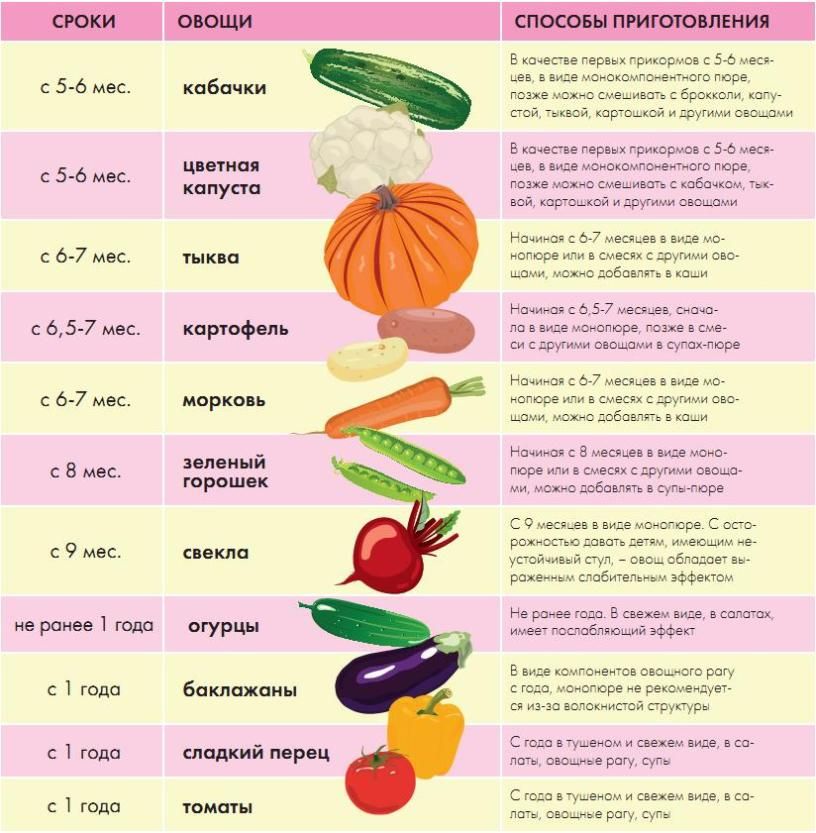 At 6 months, a typical daily portion of infant cereal mixed with breast milk or formula might be 2 to 3 tablespoons, increasing to 4 to 8 tablespoons (1/4 to 1/2 cup) by 8 months. (It's best to avoid rice cereal, though.)
At 6 months, a typical daily portion of infant cereal mixed with breast milk or formula might be 2 to 3 tablespoons, increasing to 4 to 8 tablespoons (1/4 to 1/2 cup) by 8 months. (It's best to avoid rice cereal, though.)
Fruit: Babies love the natural sweetness of fruits like pears, apples, berries, prunes, and stone fruits. Between 6 and 8 months, a baby will typically transition from about 2 to 3 tablespoons of fruit puree a day to 4 to 8 tablespoons (1/4 to 1/2 cup) of mashed or minced fruit.
Photo credit: Karla Martin for BabyCenter
Dinner for a younger baby (6 to 8 months)
If you serve a grain and fruit in the morning, consider offering a protein-rich food and vegetable later in the day. Your child may eat more or less than the amounts shown.
Protein: A baby might transition from eating 1 to 2 tablespoons of meat puree at 6 months to 2 to 4 tablespoons at 8 months, for example. Other good protein sources include cheese, unsweetened plain whole-milk yogurt, tofu, beans, and lentils.
Vegetables: Between 6 and 8 months, a baby will typically transition from about 2 to 3 tablespoons of vegetable puree a day to 4 to 8 tablespoons (1/4 to 1/2 cup). Try classic favorites like carrots, spinach, or butternut squash, as well as less traditional first foods such as parsnips, beets, or asparagus.
As your child's eating skills improve, gradually add more texture by dicing or mincing foods.
Photo credit: Karla Martin for BabyCenter
How much an 8- to 12-month-old should eat
By 8 months or so, your baby is likely getting the hang of eating and needs to eat more calories to support their growing body. But since their little belly can't hold a lot of food, they'll need to eat more often. Every baby is different, but this may be a good time to try offering a third solid food meal.
During this period:
- Continue to give your baby breast milk or formula.
- Add morning and afternoon snacks. (Some babies this age are happy with breast milk or formula as their snack, while others gravitate toward solid foods.
 ) Once you've added a third meal and snacks, your baby will be eating or drinking something about every two to three hours.
) Once you've added a third meal and snacks, your baby will be eating or drinking something about every two to three hours.
- Continue to aim for a mix of proteins, vegetables, fruits, and grains.
- Introduce coarser and chunkier textures, for example, by dicing or mincing food instead of pureeing it, and graduate to soft finger foods as your baby's eating skills improve.
- Avoid foods with added sugars. Check the Nutrition Facts label on packaged foods, and try to steer clear of foods that list 1 gram or more of "Added Sugars."
- Provide healthy options, and let your baby choose how much to eat.
To visualize daily portions for an 8- to 12-month-old, check out the following photos of a typical day's menu for a baby this age, developed by the AAP.
Your child may eat more or less than these amounts. If you're concerned about how much your baby is eating, talk to their doctor for advice.
Photo credit: Karla Martin for BabyCenter
Breakfast for an older baby (8 to 12 months)
The AAP sample menu for a baby 8 to 12 months features a breakfast consisting of:
- 4 to 8 tablespoons (1/4 to 1/2 cup) whole-grain infant cereal mixed with formula or breast milk
- 4 to 8 tablespoons (1/4 to 1/2 cup) diced fruit
Note: This is an example. Your baby may eat different foods and amounts.
Your baby may eat different foods and amounts.
Photo credit: Karla Martin for BabyCenter
Morning snack for an older baby (8 to 12 months)
The AAP sample menu for a baby 8 to 12 months features a morning snack consisting of:
- 4 tablespoons (1/4 cup) diced cheese or cooked vegetables
Note: This is an example of a morning snack, which babies typically add sometime between 8 and 12 months. Your baby may eat different foods and amounts.
Photo credit: Karla Martin for BabyCenter
Lunch for an older baby (8 to 12 months)
The AAP sample menu for a baby 8 to 12 months features a lunch consisting of:
- 4 to 8 tablespoons (1/4 to 1/2 cup) unsweetened plain whole-milk yogurt or cottage cheese, or minced meat
- 4 to 8 tablespoons (1/4 to 1/2 cup) diced or mashed yellow or orange vegetable
Note: This is an example. Your baby may eat different foods and amounts.
Photo credit: Karla Martin for BabyCenter
Afternoon snack for an older baby (8 to 12 months)
The AAP sample menu for a baby 8 to 12 months features an afternoon snack consisting of:
- 4 tablespoons (1/4 cup) diced fruit or unsweetened plain whole-milk yogurt
- 1 whole-grain teething biscuit or cracker
Note: This is an example of an afternoon snack, which babies typically add sometime between 8 and 12 months.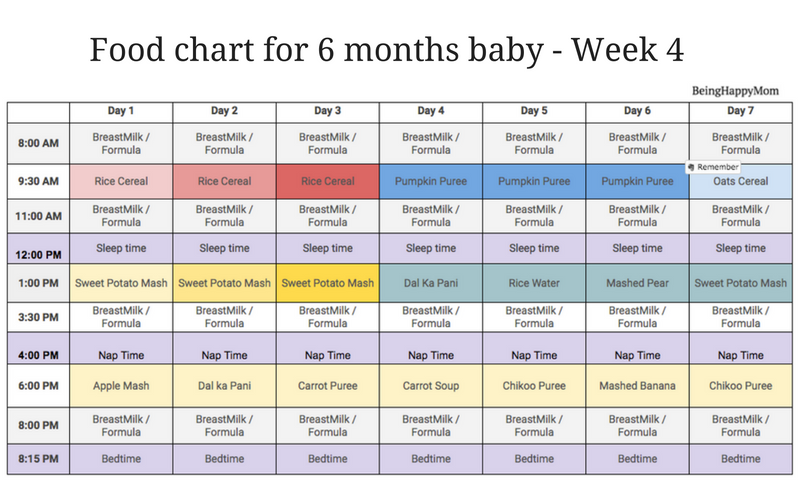 Your baby may eat different foods and amounts.
Your baby may eat different foods and amounts.
Photo credit: Karla Martin for BabyCenter
Dinner for older baby (8 to 12 months)
The AAP sample menu for a baby 8 to 12 months features a dinner consisting of:
- 4 tablespoons (1/4 cup) minced or ground poultry or meat, or diced tofu
- 4 to 8 tablespoons (1/4 to 1/2) cup diced, cooked green vegetable
- 4 tablespoons (1/4 cup) noodles, pasta, rice, or potato
- 4 tablespoons (1/4 cup) diced fruit
Note: This is an example. Your baby may eat different foods and amounts.
Photo credit: Karla Martin for BabyCenter
How much should my baby drink once they start eating solids?
Breast milk or formula will fully meet your child's hydration needs until they're about 6 months old. They may start drinking less as solid foods become a bigger part of their diet. Here are typical daily amounts by age – your baby's intake may be different, however.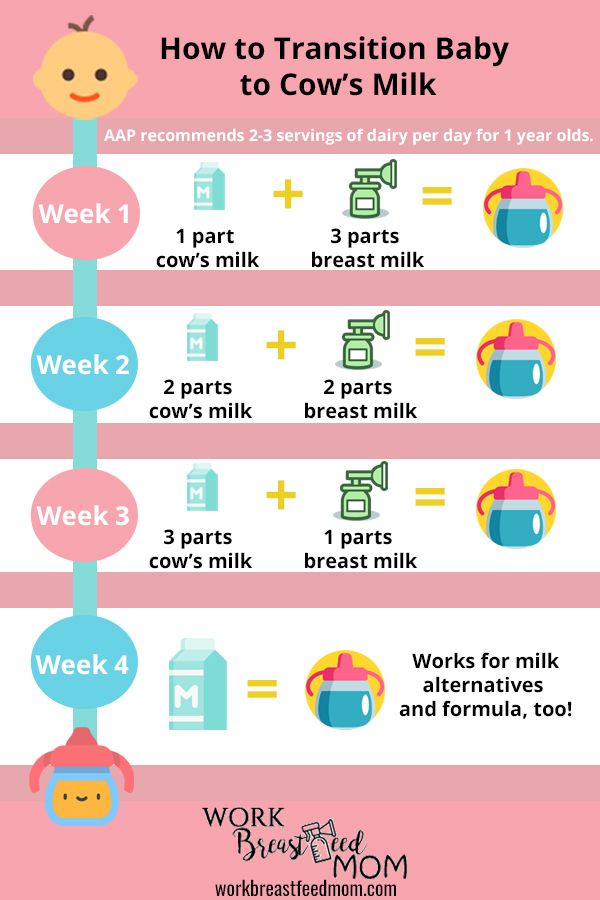
6 to 8 months: 24 to 32 ounces of formula, or continued breastfeeding on demand
8 to 12 months: 24 ounces of formula, or continued breastfeeding on demand
Water: You can offer your baby water once they start eating solids, but let them self-regulate how much they drink. The Centers for Disease Control and Prevention (CDC) recommends giving babies who are 6 to 12 months old 4 to 6 ounces of water a day, but what your baby decides to drink may vary. They may drink more on a hot day, for example.
Avoid juice: Juice isn't recommended for babies younger than 12 months.
Photo credit: iStock.com / SDI Productions
Your baby has the final say
Keep in mind that these portions are an estimate. The truth is, every baby is different, and there's no set amount of food that's appropriate for every baby at every stage.
If you're worried about whether your baby is eating enough – or too much – the best advice is to look for and respond to signs that your baby is full.
Your baby's doctor will chart their weight gain at regular intervals. If the doctor sees a consistent growth curve and doesn't have other concerns, your baby is most likely eating the right amount of food.
Hungry for more?
Age-by-age guide to feeding your baby
The 10 best foods for babies
The worst foods for babies
Using spices and seasoning in baby food
Was this article helpful?
Yes
No
Elizabeth Dougherty
Elizabeth Dougherty is a veteran parenting writer and editor who's been contributing to BabyCenter since 2015. She's an intrepid traveler, devoted yogi, and longtime resident of Silicon Valley, where she lives with her husband and son.
Advertisement | page continues below
Feeding table. Sample menu
5.5 months
Breakfast
Vegetable mono puree: zucchini, cauliflower, broccoli, potatoes, carrots. Start with 5 g (teaspoon), work up to 50 g.
6 months
Breakfast
Vegetable puree (mono) - from 50 to 100 gr.
Vegetable oil - 1 gr.
Snack
Fruit puree (single product). Apple, pear, banana. From 5 - to 30 g nine0011
6.5 months
Breakfast
Porridge (without gluten, milk, sugar): buckwheat, oatmeal, corn, rice. From 10 - to 50 g
You can start with your expressed milk, or you can use fruit juice diluted with water by 50%.
You can immediately buy milk porridge for artificial people
Lunch
Vegetable puree (can be made from mixed vegetables) - 100 g
Vegetable oil - 2 g
Afternoon snack
Fruit puree - 30-40 g
7 months
breakfast
porridge - 100 g
butter - 1 g
Fruit juice (mon) Dilute 50% - 10-20 g
9000
Vegetable puree - 150 g
Vegetable oil - 3 g
Afternoon snack0009 Dinner Cottage cheese - 5-10 g breakfast Porridge (millet/multi -zolakaya) - 150 g butter - 2 g Fruit or vegetable juice - 30 g
7.
 5 months
5 months
,0004 Vegetable puree - 150 g
Vegetable oil - 3 g
Yolk (quail) - 14 - 3 times a week
Afternoon snack
Fruit puree - 70 g
Dinner
Cottage cheese - 20-30 g
8 months
breakfast
porridge - 150 g
butter - 3 g
SOK - up to 50 g
9000 from green peas and beans.
Vegetable oil - 5 g
Yolk (quail egg) - 12 pcs. - 3 times a week.
Puree meat (mon) - from 5 to 20 g
SUPPOGE
Fruit puree - 70 g
Cookies
9000 drink - 10-20 g
8.5 months
Breakfast
Milk porridge - 160 g
Butter - 4 g
Juice - 70 g
Wheat bread - 5 g
Lunch
Vegetable puree - 170 g Oil - 5 g
Yolk 1/2 every day
Puree meat - up to 30 g
SUPPORT
Fruit puree - 70 g
Dinner 9000
9000kefir - up to 50 g
Biscuits, crackers, wheat bread
9 months
Breakfast
Milk porridge - 180 g
Butter - 5 g
Juice - up to 80 g per day
Lunch
Vegetable puree - 180 g per day
Rast. butter - 5 g
butter - 5 g
Meat puree - 50 g
Yolk (quail egg) 1/2 every other day
Snack
Fruit puree - 80 g
9000Dinner
Cottage cheese - 50 g
Kefir - 80 g
Biscuits, crackers, bread.
10-12 months
Breakfast.
Milk porridge - 200 g
Butter - 5 g
Juice - 100 ml per day
Wheat bread.
Non-fat, fresh cheese - from 10 g
Lunch
Vegetable puree - up to 200 g per day.
Grows. oil - 6 g
Meat puree - up to 70 g
Millet bread.
Yolk (quail egg) - whole every other day.
SUPPORTION
Fruit puree- up to 100 g per day
Dinner
Cottage cheese- 50 g
kefir- up to 200 g per day
cookies, crackers, bread.
Complementary feeding scheme under the National Program | menu for the first 90 days
Complementary feeding scheme in accordance with the NATIONAL PROGRAM FOR OPTIMIZING THE FEEDING OF CHILDREN IN THE FIRST YEAR OF LIFE IN THE RUSSIAN FEDERATION (hereinafter referred to as the National Program). nine0009
nine0009
Circuit description: show hidden text
About the Closed Weaning Club with Mom Boredom : Below is a table of ideal complementary foods, but you should know that information about the set of products and volumes is not enough for a competent introduction of complementary foods. Any mother at the stage of complementary feeding is waiting for a lot of tests. There is a CLOSED club on instagram where I post selective information about modern complementary foods. Details at the link.
nine0376 Complementary feeding scheme under the National Program | First month of complementary foods
First week of complementary foods
We introduce zucchini.
- Breakfast: increasing the portion of zucchini puree. We complete breakfast with the usual food (breastfeeding or formula) until full. Oil is added when portion sizes become significant. If volumes cannot be increased, do not add oil .

- Other meals: give the baby the usual food - breastfeeding or formula. nine0388
| Day | New product in the diet | Grams (teaspoons) |
| 1 | squash puree | 8 (1) |
| 2 | squash puree | 20 (3) |
| 3 | squash puree | 40 (6) |
| 4 | squash puree + 1/3 tsp vegetable oil | 60 (9) |
| 5 | squash puree + 0.5 tsp vegetable oil | 90 (13) |
| 6 | squash puree + 0.5 tsp vegetable oil | 120 (17) |
| 7 | squash puree + 0.5 tsp vegetable oil | 150 (21) |
Second week of complementary foods
Introducing broccoli. The zucchini has already been introduced.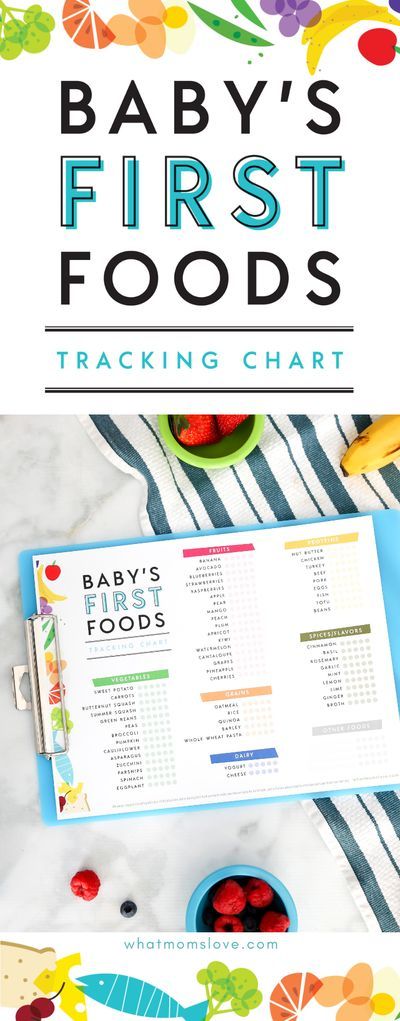
- Breakfast: we prepare two types of puree. We offer broccoli puree first, zucchini second. Oil is added when portion sizes become significant. nine0006 If volumes cannot be increased, do not add oil .
- Other meals: give the baby the usual food breastfeeding or formula.
| Day | New product | Grams (teaspoons) | Previously introduced product | Grams (teaspoons) |
| 8 | broccoli puree | 8 (1) | zucchini puree +0.5 tsp vegetable oil | 142 (20) |
| 9 | broccoli puree | 20 (3) | zucchini puree +0.5 tsp vegetable oil | 130 (17) |
| 10 | broccoli puree | 40 (6) | zucchini puree +0.5 tsp vegetable oil | 110 (15) |
| 11 | broccoli puree | 60 (9) | zucchini puree + 0. 5 tsp vegetable oil 5 tsp vegetable oil | nine0409 90 (12) |
| 12 | Broccoli puree + 1/3 tsp vegetable oil | 90 (13) | zucchini puree + 1/3 tsp vegetable oil | 60 (8) |
| 13 | broccoli puree + 0.5 tsp vegetable oil | 120 (17) | zucchini puree | 30 (4) |
| 14 | broccoli puree + 0.5 tsp vegetable oil | 150 (21) | nine0571 |
Third week of complementary foods
Introducing cauliflower. Zucchini and broccoli have already been introduced.
- Breakfast: we prepare two types of puree. We offer cauliflower puree first, broccoli / zucchini second. Oil is added when portion sizes become significant. If volumes cannot be increased, do not add oil .
- Other meals: give the baby the usual food - breastfeeding or formula.
 nine0388
nine0388
| Day | New product | Grams (teaspoons) | Previously introduced product | Grams (teaspoons) |
| 15 | cauliflower puree | 8 (1) | broccoli puree +0.5 tsp vegetable oil | 142 (20) |
| 16 | cauliflower puree | 20 (3) | zucchini puree +0.5 tsp vegetable oil | 130 (17) |
| 17 | cauliflower puree | 40 (6) | broccoli puree + 0.5 tsp vegetable oil | 110 (15) |
| 18 | cauliflower puree | 60 (9) | zucchini puree +0.5 tsp vegetable oil | 90 (12) |
| 19 | Cauliflower puree + 1/3 tsp vegetable oil | 90 (13) | broccoli puree+ | 60 (8) |
| 20 | cauliflower puree + 0. 5 tsp vegetable oil 5 tsp vegetable oil | 120 (17) | zucchini puree | 30 (4) |
| 21 | cauliflower puree + 0.5 tsp vegetable oil | 150 (21) |
Fourth week of complementary foods
We introduce buckwheat. We add a second meal of complementary foods - lunch. Zucchini, broccoli, cauliflower have already been introduced. nine0009
- Breakfast: Cooking buckwheat. We complete breakfast with the usual food (breastfeeding or formula) until full. If volumes cannot be increased, do not add oil by the end of the week .
- Lunch: for lunch we serve a portion of puree (150 gr) of familiar vegetables.
- Other meals: give the baby the usual food breastfeeding or formula.
| Day | New product in diet | Grams (teaspoons) |
| 22 | buckwheat | 8 (1) |
| 23 | buckwheat | 20 (3) |
| 24 | buckwheat | 40 (6) |
| 25 | buckwheat + 1/3 tsp butter | 60 (9) |
| 26 | buckwheat + 0.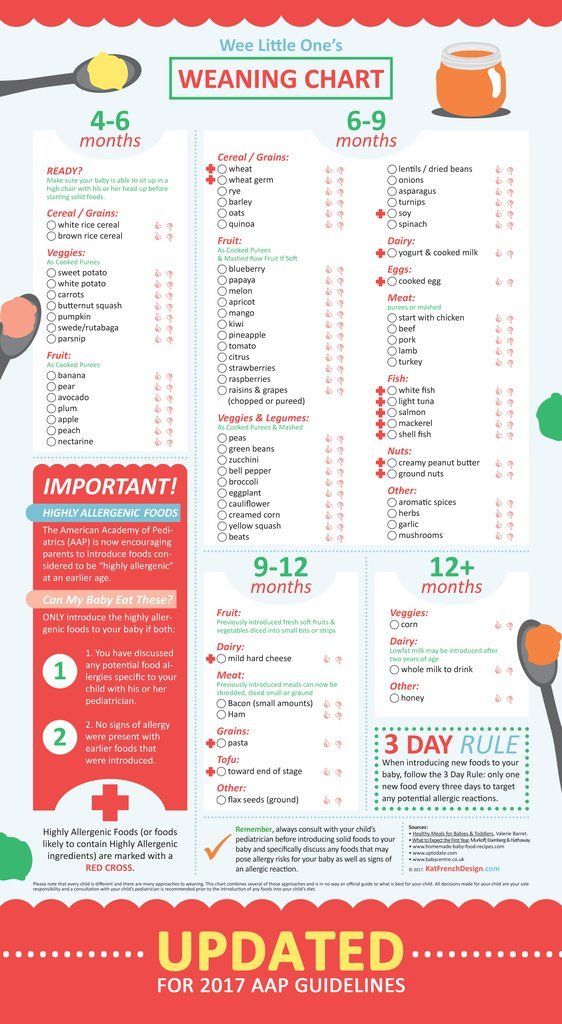 5 tsp butter 5 tsp butter | 90 (13) |
| 27 | buckwheat + 0.5 tsp butter | 120 (17) |
| 28 | buckwheat + 0.5 tsp butter | 150 (21) |
Complementary feeding scheme under the National Program | Second month of complementary foods
Fifth week of complementary foods
We introduce rice porridge. Zucchini, broccoli, cauliflower, buckwheat have already been introduced.
- Breakfast: we prepare 2 types of porridge (rice and buckwheat). First we offer rice, the second - buckwheat.
- Lunch: We eat previously introduced vegetables for lunch in the amount required by the baby (average portion 150 gr). nine0388
- Other meals: give the baby the usual food breastfeeding or formula.
| Day | New product | Grams (teaspoons) | Previously introduced product | Grams (teaspoons) |
| 29 | rice | 8 (1) | buckwheat + 1 tsp butter | 142 (20) |
| 30 | rice | 20 (3) | buckwheat + 1 tsp butter | 130 (17) |
| 31 | rice | 40 (6) | buckwheat + 1 tsp butter | 110 (15) |
| 32 | rice + 0. 3 tsp butter 3 tsp butter | 60 (9) | buckwheat + 0.5 tsp butter | 90 (12) |
| 33 | rice + 0.5 tsp butter | 90 (13) | buckwheat + 0.3 tsp butter | 60 (8) |
| 34 | rice + 1 tsp butter | 120 (17) | buckwheat | 30 (4) |
| 35 | rice + 1 tsp butter | 150 (21) |
Sixth week of complementary foods
We drive a rabbit. On the second month of successful introduction of complementary foods, the gastrointestinal tract is ready for the introduction of meat. Zucchini, broccoli, cauliflower, buckwheat, rice have already been introduced.
- Breakfast: Cooking buckwheat/rice (portion 150 gr), adding meat to the porridge!
- Lunch: for lunch we serve a portion of puree (150 gr) of familiar vegetables.

- Other meals: give the baby the usual food breastfeeding or formula.
| Day | New product | Grams (teaspoons) | Previously introduced product | Grams (teaspoons) |
| 36 | rabbit meat/commercial rabbit puree | 3g/5g | buckwheat + 1 tsp butter | 150 (21) |
| 37 | rabbit meat/commercial rabbit puree | 6g/10g | rice + 1 tsp butter | 150 (21) |
| 38 | rabbit meat/commercial rabbit puree | 10g/20g | buckwheat + 1 tsp butter | 150 (21) |
| 39 | rabbit meat/commercial rabbit puree | 15g/30g | rice + 1 tsp butter | 150 (21) |
| 40 | rabbit meat/commercial rabbit puree | 15g/30g | buckwheat + 1 tsp butter | 150 (21) |
| 41 | rabbit meat/commercial rabbit puree | 15g/30g | rice + 1 tsp butter | 150 (21) |
| 42 | rabbit meat/commercial rabbit puree | 15g/30g | buckwheat + 1 tsp butter | 150 (21) |
Seventh week of complementary foods
Introducing corn porridge. Six products have already been introduced: zucchini, broccoli, cauliflower, buckwheat, rice, rabbit meat.
Six products have already been introduced: zucchini, broccoli, cauliflower, buckwheat, rice, rabbit meat.
- For breakfast: we add corn porridge to the usual porridges. For breakfast we prepare 2 types of porridge (corn and buckwheat/rice). We offer the first corn, the second - buckwheat or rice. The volumes are listed below. nine0388
- For lunch: we eat alternating previously introduced vegetable purees of 150 gr.
- Meat a little bit daily for hemoglobin: In addition to cereals and vegetables, we give the child rabbit meat (15 gr) or industrial rabbit meat puree (30 gr). You can give it in the morning with porridge or for lunch with vegetables, as you prefer.
| Day | New product | Grams (teaspoons) | Previously introduced product | Grams (teaspoons) |
| 43 | corn porridge | 8 (1) | buckwheat + 1 tsp butter | 142 (20) |
| 44 | corn porridge | 20 (3) | rice + 1 tsp butter | 130 (17) |
| 45 | corn porridge | 40 (6) | buckwheat + 1 tsp butter | 110 (15) |
| 46 | corn porridge | 60 (9) | rice + 0. 5 tsp butter 5 tsp butter | 90 (12) |
| 47 | corn porridge + 0.5 tsp butter | 90 (13) | buckwheat + 0.3 tsp butter | 60 (8) |
| 48 | corn porridge + 1 tsp butter | 120 (17) | rice | 30 (4) |
| 49 | corn porridge + 1 tsp butter | 150 (21) |
Eighth week of complementary foods
We introduce pumpkin puree. 7 products have already been introduced: zucchini, broccoli, cauliflower, buckwheat, rice, corn porridge, rabbit meat.
- For breakfast: alternating, we eat previously introduced cereals of 150 gr.
- For lunch: add pumpkin to the usual vegetables. The volumes are listed below.
- Meat a little bit daily for hemoglobin: In addition to cereals and vegetables, we give the child rabbit meat (15 gr) or industrial rabbit meat puree (30 gr).
 You can give it in the morning with porridge or for lunch with vegetables, as you prefer. nine0388
You can give it in the morning with porridge or for lunch with vegetables, as you prefer. nine0388
| Day | New product | Grams (teaspoons) | Previously introduced product | Grams (teaspoons) |
| 50 | pumpkin puree | 8 (1) | cauliflower puree +1 tsp vegetable oil | 142 (20) |
| 51 | pumpkin puree | 20 (3) | broccoli puree + 1 tsp vegetable oil | 130 (17) |
| 52 | pumpkin puree | 40 (6) | zucchini puree +1 tsp vegetable oil | 110 (15) |
| 53 | pumpkin puree | 60 (9) | cauliflower puree + 1 tsp vegetable oil | 90 (12) |
| 54 | pumpkin puree | 90 (13) | broccoli puree + 1 tsp vegetable oil | 60 (8) |
| 55 | pumpkin puree + 1 tsp. vegetable oil vegetable oil | 120 (17) | zucchini puree | 30 (4) |
| 56 | pumpkin puree + 1 tsp. vegetable oil | 150 (21) |
Complementary feeding scheme under the National Program | Third month of complementary foods
Ninth week of complementary foods
Introduce applesauce. At the input stage, we offer an apple as a snack between breakfast and lunch or for an afternoon snack. 8 products have already been introduced: zucchini, broccoli, cauliflower, pumpkin, buckwheat, rice, corn porridge, rabbit meat. nine0009
- For breakfast: alternating, we eat previously introduced cereals of 150 gr.
- For lunch: alternating, we prepare vegetable purees from familiar vegetables, 150 gr each.
- Meat for hemoglobin : In the tenth week of feeding, the child should be 7 months old, which means we increase the daily norm of meat: rabbit meat (30 gr) or industrial rabbit puree (50 gr).
 It can be served in the morning with porridge or for lunch with vegetables, as you prefer.
It can be served in the morning with porridge or for lunch with vegetables, as you prefer.
| Day | New product | Grams (teaspoons) |
| 57 | applesauce | 8 (1) |
| 58 | applesauce | 15 (2) |
| 59 | applesauce | 20 (3) |
| 60 | applesauce | 30 (4) |
| 61 | applesauce | 40 (6) |
| 62 | applesauce | 50 (7) |
| 63 | applesauce | 70 (10) |
Tenth week of complementary foods
Introducing oatmeal. 9 products have already been introduced: zucchini, broccoli, cauliflower, pumpkin, buckwheat, corn porridge, rice, rabbit meat. applesauce.
applesauce.
- For breakfast: we add oatmeal to the usual porridges. For breakfast, we cook 2 types of porridge (oatmeal and corn / buckwheat / rice). First we offer oatmeal, the second - corn / buckwheat or rice. Oatmeal is taken in the form of flakes, its other name is oatmeal. Do not confuse with cereal oatmeal. nine0388
- For lunch: alternating vegetable puree from familiar vegetables portion 150 gr.
- Meat for hemoglobin : Together with vegetables, daily give the child rabbit meat (30 g) or industrial rabbit puree (50 g).
- Snack: apple puree 70 gr.
| Day | New product | Grams (teaspoons) | Previously introduced product | Grams (teaspoons) |
| 64 | oatmeal | 8 (1) | buckwheat + 1 tsp butter | 142 (20) |
| 65 | oatmeal | 20 (3) | rice + 1 tsp butter | 130 (17) |
| 66 | oatmeal | 40 (6) | corn porridge + 1 tsp butter | 110 (15) |
| 67 | oatmeal + 0. 3 tsp butter 3 tsp butter | 60 (9) | buckwheat + 0.5 tsp butter | 90 (12) |
| 68 | oatmeal + 0.5 tsp butter | 90 (13) | rice + 0.3 tsp butter | 60 (8) |
| 69 | oatmeal +1 tsp butter | 120 (17) | corn porridge | 30 (4) |
| 70 | oatmeal +1 tsp butter | 150 (21) |
Eleventh week of complementary foods
Introduce turkey yolk and meat. 10 products have already been introduced: zucchini, broccoli, cauliflower, pumpkin, buckwheat, corn porridge, rice, oatmeal, rabbit meat. applesauce.
- For breakfast: one of the previously introduced cereals (buckwheat, corn porridge, rice, oatmeal) 150 gr + in the first half of the week we increase the amount of yolk (for babies of 7 months, maximum per day - 1/4 yolk, from 8 months up to a year 1/2 yolk)
- For lunch: alternating vegetable puree from familiar vegetables portion 150 gr.
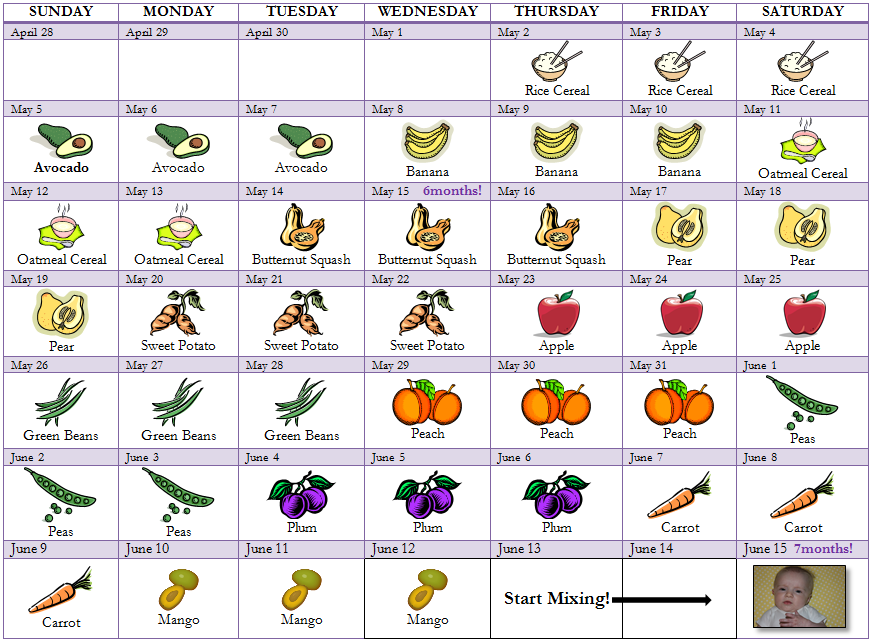 Together with vegetables, we give the child rabbit meat (30 g) or industrial rabbit meat puree (50 g) daily. In the second half of the week, we gradually replace rabbit meat with turkey.
Together with vegetables, we give the child rabbit meat (30 g) or industrial rabbit meat puree (50 g) daily. In the second half of the week, we gradually replace rabbit meat with turkey. - Snack: apple puree 70 gr.
| Day | New product | Grams (teaspoons) | Previously introduced product | Grams (teaspoons) |
| 71 | yolk 1/8 yolk | |||
| 72 | yolk 1/4 yolk | |||
| 73 | yolk 1/4 yolk | |||
| 74 | turkey meat/commercial turkey puree | 3g/5g | rabbit meat/commercial rabbit puree | 12gr/25gr. |
| 75 | turkey meat/commercial turkey puree | 10g/15g | rabbit meat/commercial rabbit puree | 20gr/35gr. |
| 76 | turkey meat/commercial turkey puree | 15g/30g | rabbit meat/commercial rabbit puree | 15gr/20gr. |
| 77 | turkey meat/commercial turkey puree | 30g/50g | rabbit meat/commercial rabbit puree |
Twelfth week of complementary foods
Introducing pear puree. 12 products have already been introduced: zucchini, broccoli, cauliflower, pumpkin, buckwheat, corn porridge, rice, oatmeal, rabbit and turkey meat, applesauce, egg yolk.
- For breakfast: one of the previously introduced cereals (buckwheat, corn porridge, rice, oatmeal) + yolk (7 months - 1/4, 8 months - 1/2).
- For lunch: alternating vegetable puree from familiar vegetables portion 150 gr. Together with vegetables, we give the child turkey or rabbit meat every day (30 g of meat or 50 g of industrial puree).
 nine0388
nine0388 - Snack: during the week we gradually replace the apple with a pear.
| Day | New product | Grams (teaspoons) | Previously introduced product | Grams (teaspoons) |
| 78 | pear puree | 8 (1) | applesauce | 62 (9) |
| 79 | pear puree | 15 (2) | applesauce | 55 (8) |
| 80 | pear puree | 20 (3) | applesauce | 50 (7) |
| 81 | pear puree | 30 (4) | applesauce | 40 (6) |
| 82 | pear puree | 40 (6) | applesauce | 30 (4) |
| 83 | pear puree | 50 (7) | applesauce | 20 (3) |
| 84 | pear puree | 70 (10) |
Thirteenth week of complementary foods
Introduce chicken.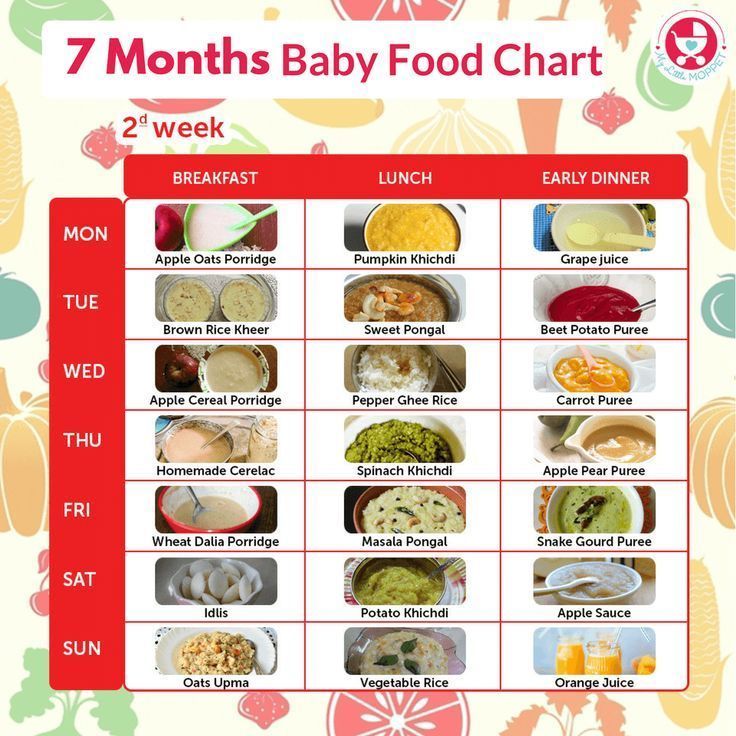 Already introduced: zucchini, broccoli, cauliflower, pumpkin, buckwheat, corn porridge, rice, oatmeal, rabbit and turkey meat, apple, pear, egg yolk.
Already introduced: zucchini, broccoli, cauliflower, pumpkin, buckwheat, corn porridge, rice, oatmeal, rabbit and turkey meat, apple, pear, egg yolk.
- For breakfast: one of the previously introduced cereals (buckwheat, corn porridge, rice, oatmeal). We serve the yolk to the porridge. 7 months - 1/4 yolk, 8 months. - 1/2. nine0388
- For lunch: preparing vegetable puree from familiar vegetables portion 150 gr. Together with vegetables, we give the child a rabbit or turkey every day. During the week, we gradually introduce the child to chicken meat.
- Snack: daily give 70 g of fruit puree alternating apple and pear.
| Day | New product | Grams (teaspoons) | Previously introduced product | Grams (teaspoons) | nine0403
| 85 | chicken meat/ industrial chicken puree | 3g/5g | turkey meat/ industrial turkey puree | 27g/45g |
| 86 | chicken meat/ industrial chicken puree | 10g/15g | rabbit meat/ industrial rabbit puree | 20g/35g |
| 87 | chicken meat/ industrial chicken puree | 20g/30g | turkey meat/ industrial turkey puree | 10g/20g |
| 88 | chicken meat/ industrial chicken puree | 30g/50g | ||
| 89 | chicken meat/ industrial chicken puree | 30g/50g | ||
| 90 | chicken meat/ industrial chicken puree | 30g/50g |
Fourteenth week of complementary foods
We introduce carrots and beets.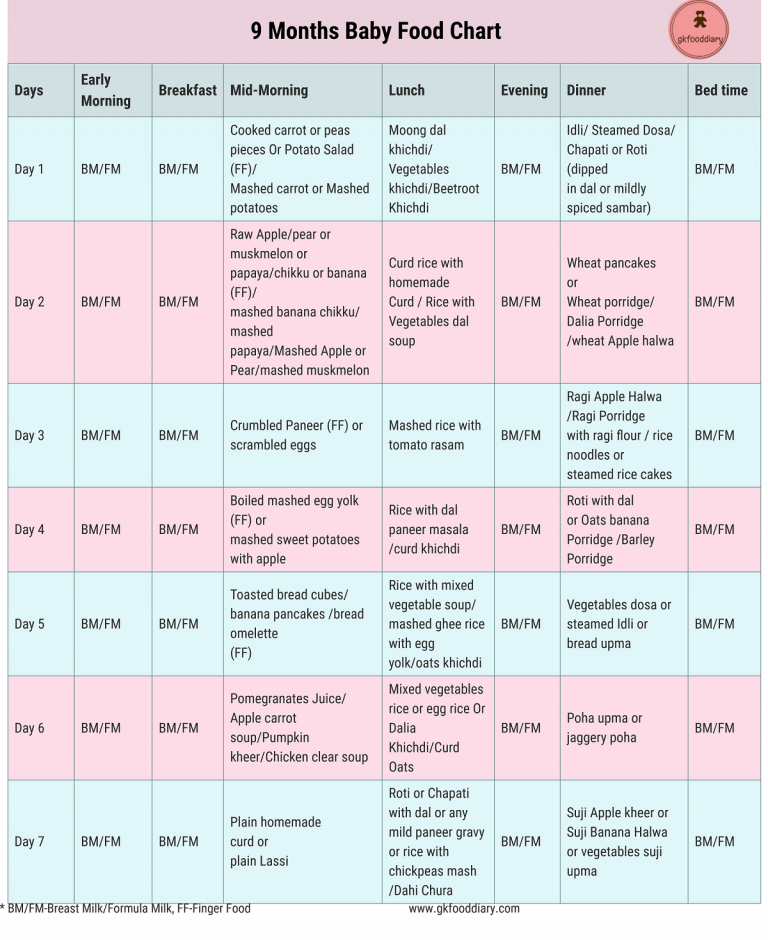 14 products have already been introduced: zucchini, broccoli, cauliflower, pumpkin, buckwheat, corn porridge, rice, oatmeal, rabbit meat, turkey and chicken, apple, pear, egg yolk.
14 products have already been introduced: zucchini, broccoli, cauliflower, pumpkin, buckwheat, corn porridge, rice, oatmeal, rabbit meat, turkey and chicken, apple, pear, egg yolk.
- For breakfast: one of the previously introduced cereals (buckwheat, corn porridge, rice, oatmeal). We serve the yolk to the porridge. At 8 months, you can already have half.
- For lunch: in the first part of the week we gradually add carrots to the previously familiar vegetables, in the second part of the week - beets. Carrots and beets are concentrated vegetables, so mix them with zucchini or cabbage puree. Together with vegetables, we give the child a rabbit, turkey or chicken every day. For a child of 7 months: 30 g of meat or 50 g of industrial puree. For a child of 8 months: 35 gr. meat or 70 gr. industrial puree. nine0388
- Snack: daily give 70 g of fruit puree alternating apple and pear. For babies 8 months 80 gr puree.

| Day | New product | Grams (teaspoons) | Previously introduced product | Grams (teaspoons) |
| 91 | carrot puree | 8 (1) | zucchini puree +1 tsp vegetable oil | 142 (20) | nine0403
| 92 | carrot puree | 20 (3) | broccoli puree +1 tsp vegetable oil | 130 (17) |
| 93 | carrot puree | 40 (6) | cauliflower puree zucchini +1 tsp vegetable oil | 110 (15) |
| 94 | carrot puree | 60 (9) | zucchini puree +1 tsp vegetable oil | 90 (12) | nine0403
| 95 | beet puree | 8 (1) | broccoli puree +1 tsp vegetable oil | 142 (20) |
| 96 | beet puree | 20 (3) | cauliflower puree zucchini +1 tsp vegetable oil | 130 (17) |
| 97 | beet puree | 40 (6) | zucchini puree +1 tsp vegetable oil | 110 (15) |
The form for downloading and printing the complementary feeding scheme is here.
Complementary feeding scheme under the National Program | Complementary feeding problems
- Difficulties with stool : constipation during the introduction of complementary foods can occur even against the background of zucchini. This is due to the restructuring of the gastrointestinal tract, and not the fact that the zucchini is “heavy”. "Jump" to another product is not worth it, as this will further complicate the task for the gastrointestinal tract. You should stop increasing the volume of the new product, slightly reduce the already built-up product and wait for the stool to stabilize. Offer water to drink. When the problems pass, introduce a new product not in 7 days, but in 10-14. nine0388
- Serving sizes c may be significantly smaller than the reference. It should also be borne in mind that the diagram shows volumes for an infant with an average energy requirement. Depending on the activity and complexion of the baby, they can vary + -30%.



